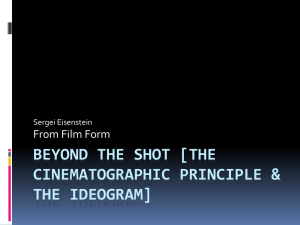Eisenstein's Battleship Potemkin: Montage & Film Techniques
advertisement
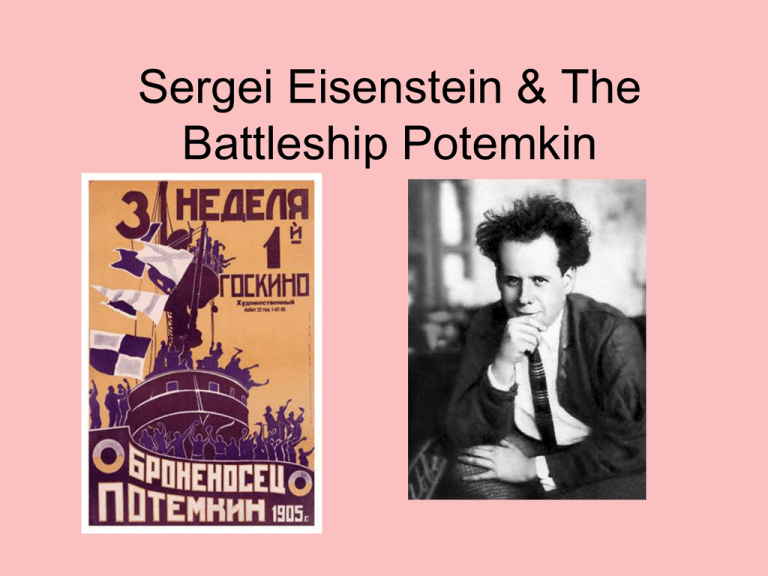
Sergei Eisenstein & The Battleship Potemkin • In the early 1920s, Lenin decided to permit increased freedom in the arts, and the Soviet cinema opened up and began to explore new possibilities. • Thereafter, through the final years of the silent era the USSR became one of the most important and influential filmmaking nations in the world. • Eisenstein argued that "the maximum effect could be gained only if the shots did not fit together smoothly, but instead jolted the spectator." = intellectual montage • Soviet Montage "used the power of editing to manipulate the emotions of the spectator" and rather than narrative structure or character development "they stressed social forces as the root causes of change in people's lives." • The Odessa steps massacre was filmed as "a single event to symbolize the hopes, triumphs, sufferings, and ultimate failure of the (1905) revolution." • Long shots convey confusion and alarm, intercut with "eyes of terror, lips in silent scream, feet stumbling, a bouquet crushed, a broken umbrella, and a woman losing her baby carriage." • Eisenstein refers to 5 kinds of montage: metric, rhythmic, tonal, overtonal, intellectual. • Metric montage: editing tempo increased as massacre intensified. • Rhythmic montage: military order of the steady marching soldiers is in dramatic contrast to the disorder of the fleeing crowd. • Tonal montage: conflicting intersecting planes and masses and shadows of soldiers' rifles and uniforms intersect the light reflecting off fleeing citizens. • Overtonal Montage this takes the previous three elements to produce the overall effect or emotional pull. How the viewer feels after watching the film. • However, Eisenstein is vague about what overtonal montage is. • Intellectual montage: end sequence of battleship firing 3 times; 3 images of marble lions - the first sleeping, the second waking, the third rising appear as a single beast, "aroused as the Russian masses will be ten years later against tsarist oppression." • So, Soviet film is all about editing then? Nope. Editing is the most obvious characteristic that everyone thinks of with these films, but look at how Eisenstein utilises mise-en-scene… • Soviet typage "focused on stature and gestures" of the people of the proletariat, rather than famous stars. Typage • The Captain and the Sailor • After Strike!, Eisenstein turned against the use of trained actors. He sought out plain folk who looked the part, then costumed them properly and trained them to move in certain, slightly exaggerated ways. • From his early theatrical training, Eisenstein developed theories about body movement and positioning as a method of communicating ideas. In these examples, both from Potemkin, the authoritarian captain is in a starched uniform, and moves in a stiff manner. He is frequently shown framed symmetrically by set elements. The sailor who leads the mutiny, on the other hand, is first revealed to the audience only half dressed. His movements are forceful, graceful, and his body positions are more angular. • Mass Geometry • Tsar's Troops and Petrograd Proletariat • Eisenstein used his concepts of body positioning on large crowd scenes as well. The Odessa steps sequence from Potemkin--an amazing mixture of camerawork, editing, and directorial skills--allows us to see this effect at its best. The Tsar's troops, marching down the steps, are faceless automatons in lock-step, slaying everything in their path. Those citizens who they have shot lie draped over the stairs in a very organic fashion. In the centre is the mother, carrying her son who had been shot by the troops then trampled by the fleeing crowd. She is reminiscent of paintings of the Virgin Mary, cradling Jesus in her arms after his crucifixion. • Inflammatory Images • • Slain Innocents Even the most artistic renderings of events may fail to move an audience as efficiently as a good old inflammatory image. There are no shortages of those in Eisenstein's films. Eisenstein studied anthropological texts and psychological works to better understand human nature. But he also knew which buttons to push to enrage or horrify an audience. In both these instances, military representatives of the authoritarian regimes wreak havoc on innocents in particularly galling fashion. • Shooting an old lady (Battleship Potemkin) in the eye is bad enough, but tossing young children off balconies (Strike!) is beyond the pale. And that was exactly the reaction Eisenstein sought. Let’s apply this to a sequence from Strike! • What elements of Eisenstein’s technique can we identify ?

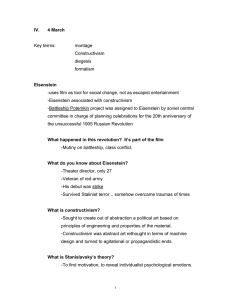
![[Lecture 17] soviet montage 3 for wiki](http://s2.studylib.net/store/data/005394749_1-74b063163f399dbb4123cebb7c05cab3-300x300.png)

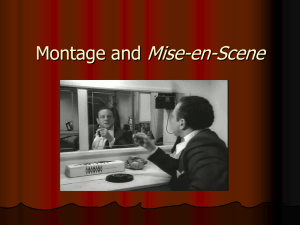
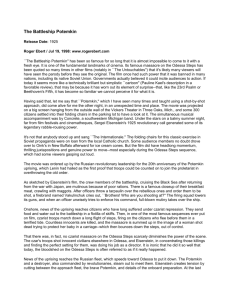
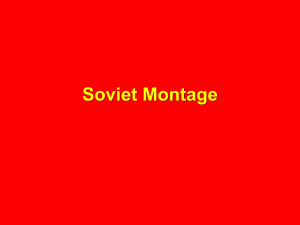
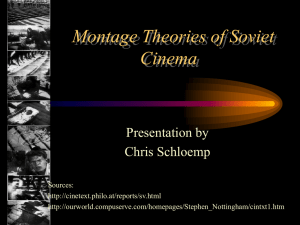
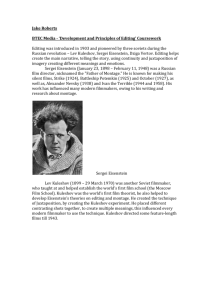
![[Lecture 11] french impressionism 2 wiki](http://s2.studylib.net/store/data/005312004_1-a91ff3d76aa998988e8364ab8758ea87-300x300.png)
